Portland Dorset
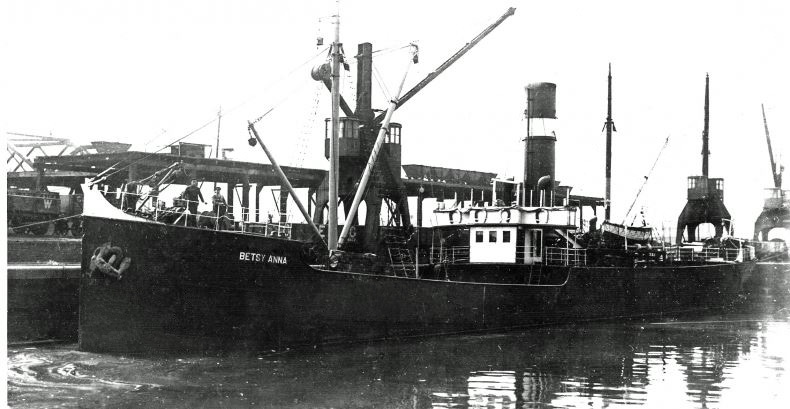
There was little glamorous about coal in the Victorian era, it was the fuel that built the industrial revolution and arguably made the largest contribution to the Victorian era and, therefore, by extension, the British Empire. The Ashington Coal Co of Newcastle on Tyne had it’s origins in the late 1840’s, at one time Ashington was “….proudly proclaimed as the largest pit village in the world….” (Thornton. S in “History Lesson – Ashington No.5: Today’s history lesson – Ashington Coal company No.5” Online resource: https://northtynesiderailway.blogspot.com/2020/07/history-lesson-ashington-no5.html Accessed: 25/05/2023). The town had the largest private railway system in Northumberland, possibly even in the whole of the North East of England
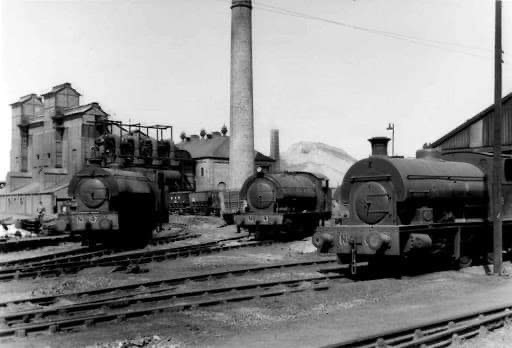
The Railway was constructed in 1879 and ran from 1880, it was 2ft Gauge to begin with and built to ferry miners between Ashington & Pegwood Colliery, miners alighting at Hirst Platform (Ashington Colliery), it used four and six wheel coaches and was operated by the colliery company (Young. A in “Disused Stations Site Record: Station name: Hirst Platform” Online resource: http://disused-stations.org.uk/h/hirst_platform/index.shtml Accessed: 25/05/2023)
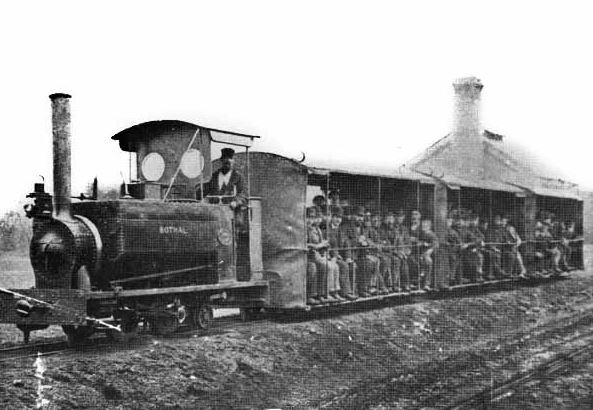
The intimate connection between Ships, Trains and coal was visceral in the Victorian era, without coal there was no steam, without steam there were no steam trains or steamships and without steamships and steam trains there was little or no travel, especially global travel. Whilst Sailing ships and windjammers carried trade across the world for a hundred years, coal and steam power revolutionised industry and travel, shortening distance and travel time to a degree never before possible…… Ashington lies around 4 miles from Morpeth and 15 miles North of Newcastle Upon Tyne and was part of the Hamlet of Bothal (hence the engine name above). Owned by the Duke of Portland, Ashington only really developed into a large town when local men were granted permission to mine in the area paying royalties to the Duke for the privilege. Between 1840 and 1867 the town grew to include “…..Six hundred and sixty five houses (had been) built in eleven long rows, running from East to West, to accommodate the colliers” (Sense of Place North East, Northumberland Communities, Ashington Online resource: https:// communities.northumberland.gov.uk/Ashington.htm Accessed 25/05/2023)

The Steam Collier Ashington was built for the Ashington Coal Company and launched in May of 1892 by William Dobson and Co from their Wincomblee Road Yard, (between Mitchell’s Low Walker Yard and, latterly, the Walker Naval Yard). The Wincomblee yard had three berths and could construct vessels up to 10,000 tons, there was a smaller berth for building tugs and hopper barges
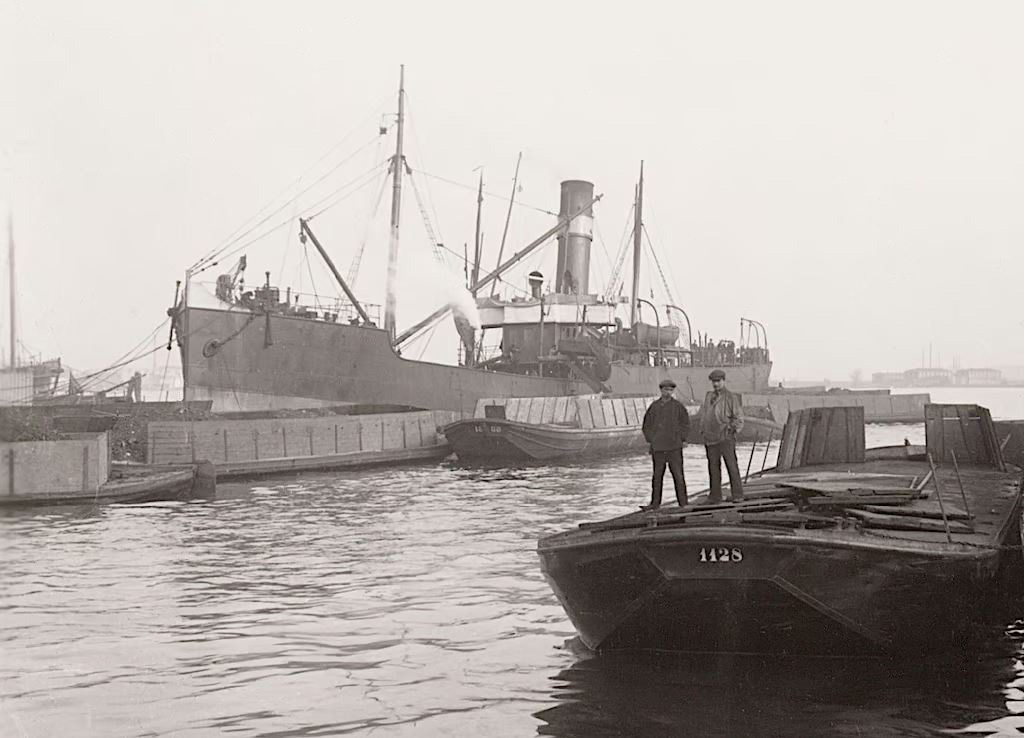
The Ashington was decidedly functional and of her time, utilitarian it could be said, she had forward and aft holds, a meager accommodation and engine room, an open bridge, and was powered by a 3 cylinder compound steam engine & boilers by John Dickinson & Sons of Sunderland. Purpose built as a cargo steamer this was a workhorse, and at around 530 Tons Net weight, she could carry around the same in coal for a dead-weight of 1300 Tons, a coaster destined to be moving coal from pit quay to the corners of empire via much grander passenger and transports of the time

It is truly remarkable to find a receipt for Boiler Steel in the Lloyds Register Foundation Archives where John Dickinson of Sunderland has purchased Steel Plates from David Colville & Sons of Motherwell on the 20th of March of 1890, it is very likely these plates would become a part of the Ashington’s Boiler…….
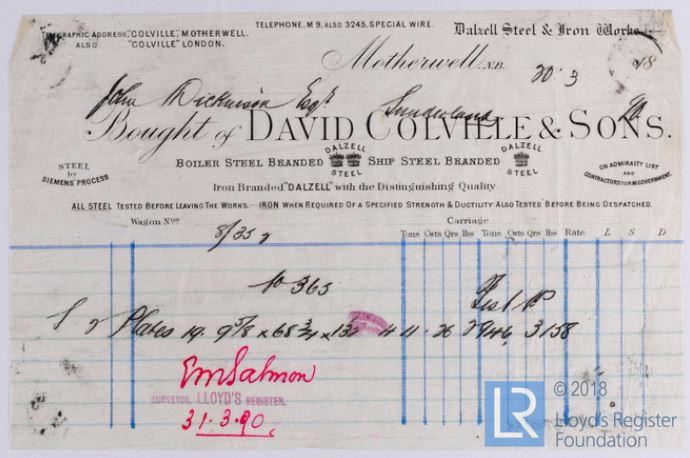
William Dobson & Co, Newcastle upon Tyne was started by its namesake William Dobson in 1883, Dobson had previously worked for Barclay & Curle on the Clyde and then moved to Newcastle in 1863 to manage Mitchell’s Yard at Low Walker. The Wincomblee Yard was started in 1883 on land adjacent to the Low Walker Yard and had 3 berths for mid-range vessels up to 10,000 Tonnes and a smaller slipway for Tugs and hopper barges (Tyne Built Ships “William Dobson & Co (1883-1928) – History” Online resource: http://www.tynebuiltships.co.uk/Dobson-History.html Accessed 02/06/2023)
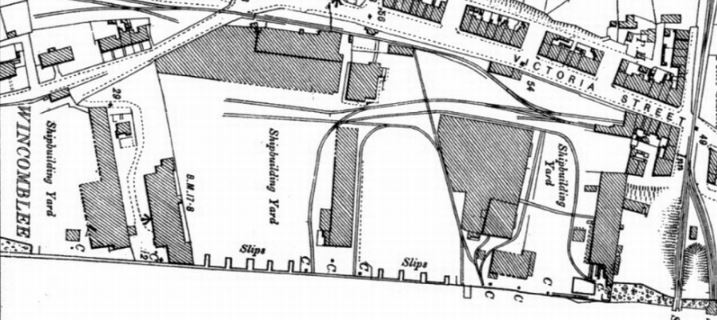
The Dobson & Co yard built special orders, some for the Russian market, coasters and river boats mainly. It is interesting to note some of these vessels were built and then dismantled to be shipped abroad for re-construction in foreign yards, presumably to allow local fit-out and finish and avoid having the expense of additional work at higher British prices, however there is no note to confirm a specific reason. William Dobson & Co lasted under the ownership of his sons following William’s death in 1907, they would keep it until the last known vessel, White Crest, was finished in 1928 when the yard was taken over in July of that year by Armstrong-Whitworth
For those of you who love the technical details:
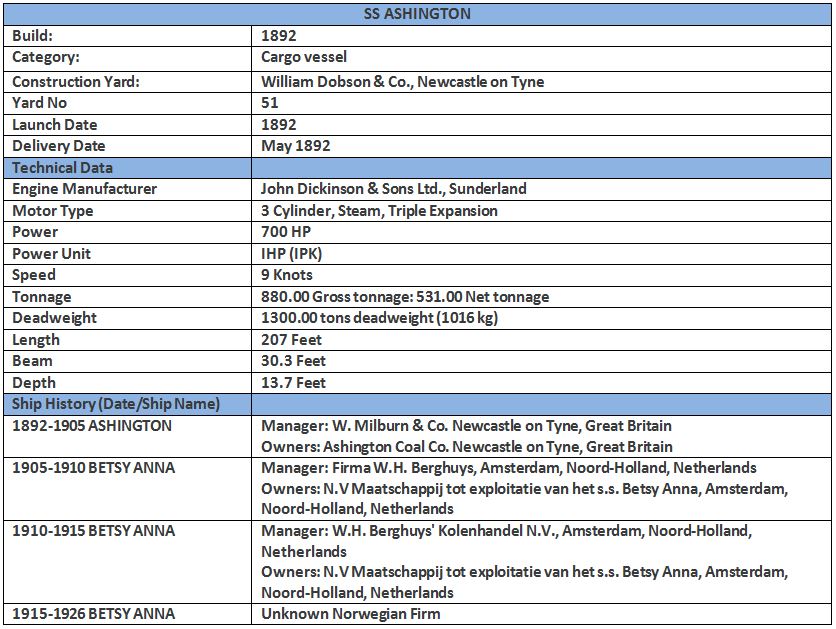
The Ashington Coal Company bought at least one additional steamer, the Woodhorn, built in 1894 by J L Thompson & Sons of Northsands, again using a John Dickinson Engine and boiler, it is the Woodhorn that gives an idea of the routes these vessels would typically run as she was torpedoed on a journey from Blyth in Northumberland en route to Sarpsborg, Norway. Likely these steam colliers would be largely employed on UK coastal journeys, but occasionally see longer trips to Nordic and other North-sea ports, wherever their cargoes would fetch a better price assuredly
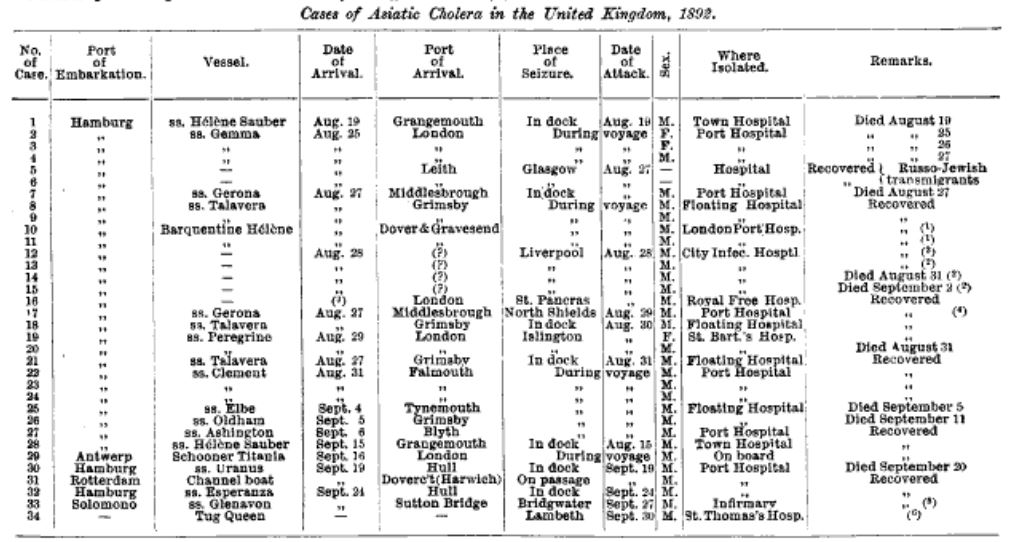
One particular journey does become a matter of record however for a distinctly different reason and found in a rather unexpected journal: (The British Medical Journal October 15th 1892. P 864: “Cases of Asiatic Cholera in the United Kingdom, 1892.”) where a case of Asiatic Cholera was recorded in a member of the Ashington’s crew arriving in Blyth 06th Sept of 1892 from Hamburg in Germany. Luckily for him the sailor survived following treatment at Blyth Port Hospital, as Cholera had been expected in Britain having been a large scale epidemic in Europe in the summer of 1892, so much so that The medical Department in the UK deployed a Dr Barry to monitor the spread in Europe. His observations lead to the issuing of precautionary advice and prompted measures to control immigration and preventative emergency arrangements in London and British ports (Hardy. A in “Cholera, quarantine and the English preventive system 1850-1895” Para 2, P 265. Online resource: https://www.ncbi.nlm.nih.gov/ pmc/articles/ PMC1036746/ pdf/medhist00042-0032.pdf Accessed 31/05/2023)
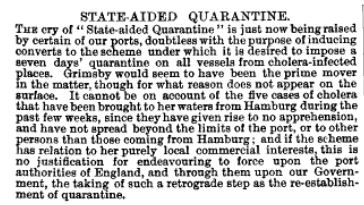
It is clear from the British Medical Journal (Vol 2 No 1659 (Oct 15th 1892) P864-868, that there was little support for the re-imposition of a period of Quarantine to prevent the wider spread of the disease through Britain from Europe. The report states containment of individuals showing symptoms at the ports had effectively prevented the spread. A perhaps less than expected conclusion from a respected medical journal, especially in light of the Government “overkill” response to our recent viral Covid pandemic. It is interesting to see how easily the Ashington and her steam driven peers demonstrate the huge influence advancing steam technology had on global travel and the spread of populations (and diseases) around the globe……..

One thing immediately obvious which made Ashington stand out is her forepeak, the pronounced “Crown” or perhaps more Tiara-like bow peak above her Hawses is very distinctive, I can’t recall seeing another like it. In truth, although Ashington lacks the glamour of a Liner, or the more prestigious look of a passenger steamer, she has something distinct about her, an honest swagger if you like! Ashington was sold to a Dutch company, Firma W H Berghuys of Amsterdam, (Noord-Holland) Netherlands in 1905 and re-named Betsy Anna to honour the director’s British Wife. In an odd parody, the Dutch registration of the company who bought her is “Maatschappij tot exploitatie van het Betsy Anna” literally translated as “The company to exploit Betsy Anna”, hopefully the director’s wife had no Dutch language skills otherwise I could foresee some awkward conversations over the dinner table in the Berghuys home……..
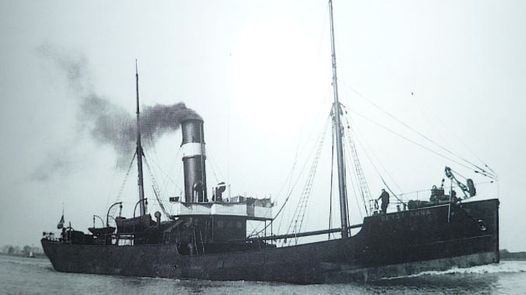
There is at least one incident in Betsy Anna’s life with the Berghuys coal shipping company, as the postcard view above illustrates, Betsy Anna aground off the seaside resort town of Egmond aan Zee (by the sea) on the North Coast of the Netherlands, best known for the Dutch painters Cornelis Beelt and Jacob van Ruisdael painting around the area in the 1600’s and, in the time of the Ashington era of our vessel, the small colony of artists hosted by Egmond Binnen including the Americans George Hitchcock, Gari Melchers and Walter MacEwen in the mid 1880’s

The Betsy Anna stranding is detailed in a piece on her in the Dutch Maritime History Databank and describes the event of the 31st of January 1914: “The steamship was loaded with 1100 tons of coal, came from West Hartlepool and was destined for Amsterdam. In view of the bad weather, the crew, consisting of 17 people, was taken ashore by the Egmonder lifeboat. According to the captain’s report, they had become entangled in the fog. On Saturday afternoon, the tug ‘ATLAS’ left for the beaching location to try and make it off. This succeeded towards evening, and the ‘BETSY ANNA’ was towed into IJmuiden on Sunday morning. (Source: Kleine Courant,’t Vliegend Blaadje, for Helder Texel; 04.02.1914 RN – Rotterdamsch Nieuwsblad 31-12-1915)” The sources quoted are the small (local) newspaper “Flying Blade of Helder” 04th Feb 1914 and the “Rotterdam Newspaper” of 31st December of 1915
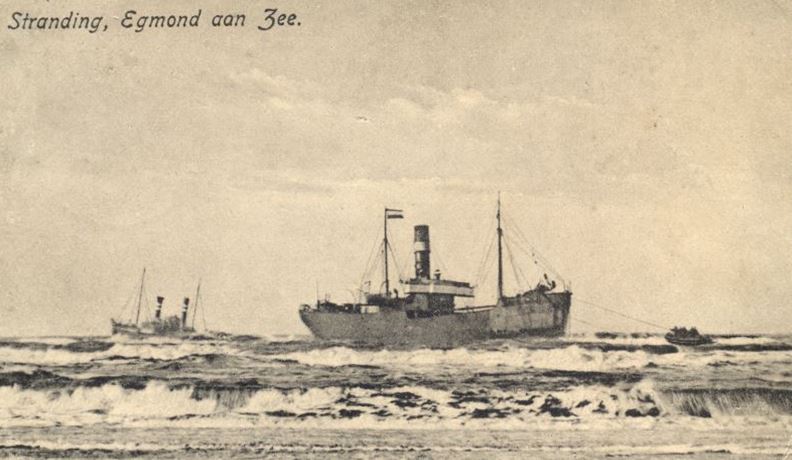
It seems that Ships have been coming ashore at Egmond by the sea for millennia, however it is clear the Betsy Anna did not do so intentionally from the tug Atlas, of Zur Muhlen & Co, towing her off the sandbar evident in the postcard. I can only assume that the small boat attached to Betsy Anna’s bow is attempting to keep her straight as she is hauled to prevent her capsizing during the tow. Betsy Anna’s home port was Amsterdam, however her coaling for North Sea, Baltic and European journeys was often carried out from Rotterdam and in 1910 she would be sold again, this time to another Dutch company, W H Berghuys Kolenhandel N. V. clearly a subsidiary of the original Firma Berghuys but now indicating “Coal Trade” (Kolenhandel) in the title, not just “Firm” (Firma) however Betsy Anna was still managed by The company to exploit Betsy Anna………. This period of Betsy Anna’s life was not without incident and a measure of controversy too, way before Jarrow became a focus for the unemployed marching to parliament in October of 1936, the crew of the Betsy Anna refused to sail her back to Rotterdam from Hull in 1915 in fear of the German U Boat Threat to sink “neutral” (those ostensibly not declared at war) shipping. The crew claimed they were on strike, the shipowners, Naamlooze Vennootschap (limited company) W H Berghuys Kolenhandel, decided to use a strike exemption clause to force the issue, (Schofield. J: “Laytime & Demurrage Interruptions and exceptions to laytime” Ch 4.340 P 36 Seventh Edition Published by Informa Law from Routledge, 711 Third Avenue, New York 2016) the judge (J. Sankey) allowed the use stating “…..I do not think it would be possible to say the abstention of a workman from mere fear to do a particular thing or perform a particular contract would necessarily constitute a strike” the crew were instructed to sail……..
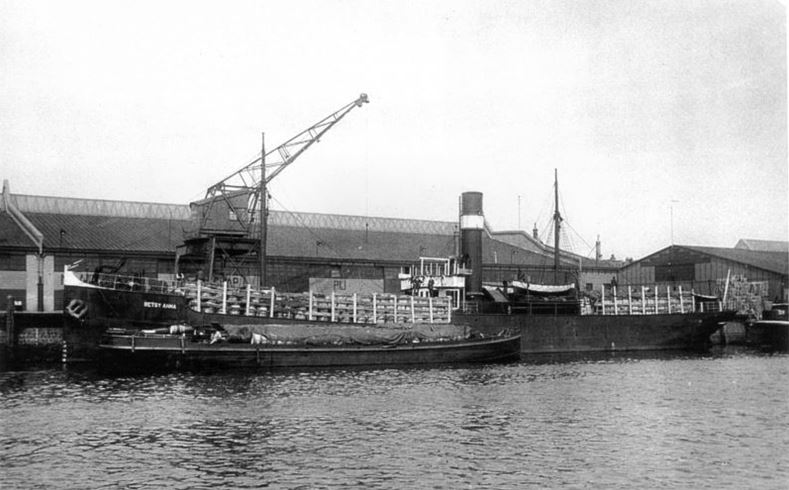
I expect there will be manifests and crew registers available for any native Dutch speaker to find, presuming the records survived the First World War, it would be fascinating to see the extent of the Betsy Anna’s travels, sadly I have no Dutch and can find nothing easily available through the usual myriad sources. The Betsy Anna would definitely have seen some service in the Nordic States as on the 29th December of 1915 she was sold to a Norwegian Company, this again from the Dutch Maritime History site: “The steamship BETSY ANNA, of the shipping company W.H. Berghuis, over here, was sold to Norway for, it is said 350,000 NLG” Even allowing for a decimal place being out (35,000) 35,000 Dutch Guilders in 1915 would be equivalent to just over a million UK£ today
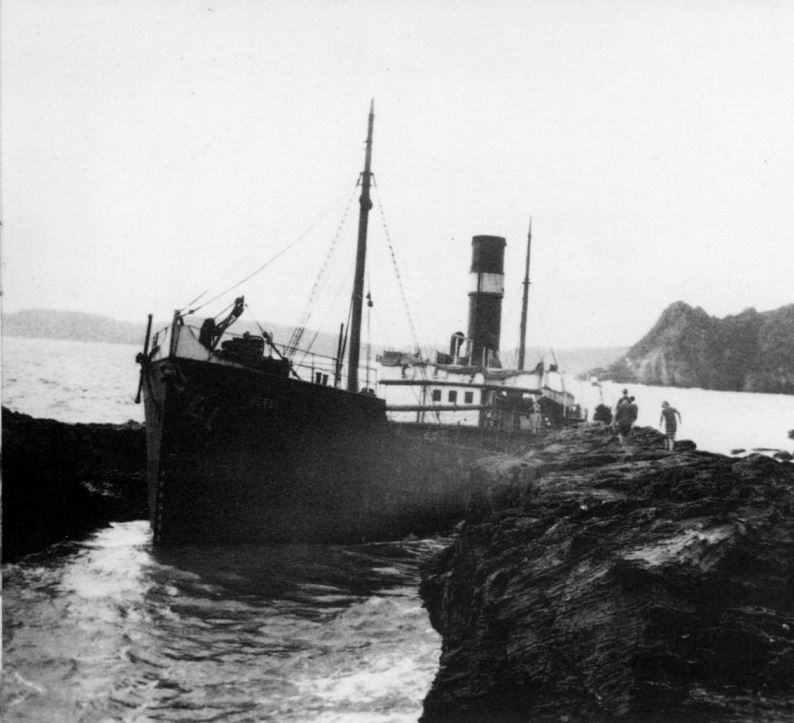
What is abundantly clear is that Betsy Anna continued to cross the North Sea to the UK as, on the 17th August of 1926, whilst in ballast (empty of coal or cargo) and travelling from Fleetwood in the UK back to Rotterdam, she ran aground at Prawle Point in Devon. I can only imagine Betsy Anna had been carrying coal for the Fleetwood steam trawlers and had unloaded there, the weather on the outbound journey was calm enough but towards Devon she ran into a dense fog, this was all before RADAR or GPS, at that time navigation was by Chart, Compass and Sextant…..or dead reckoning, line of sight essentially, and coast hugging, for some that perhaps lacked sufficient formal maritime navigation training. Betsy Anna ran aground in dense fog at Prawle Point, more specifically just past Gammon Head and Maceley cove on the rocks between Elender Cove and Black Cove, you can clearly see Gammon Head behind her in the photographs taken at the time of her stranding
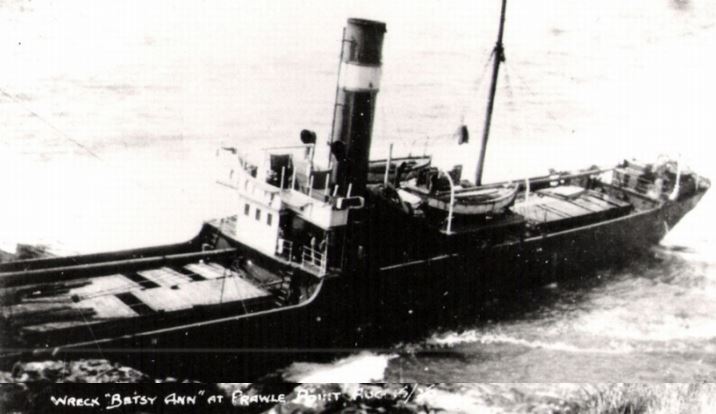
As in the Egmond incident, Betsy Anna would be re-floated in an attempt to salvage her, and plans were laid to get her to Cowes in the Isle of Wight for repair. On the 03rd October of 1926 she was towed off the rocks by the tug Trustee and beached at Salcombe, in order to make temporary repairs before making the onward journey to Cowes
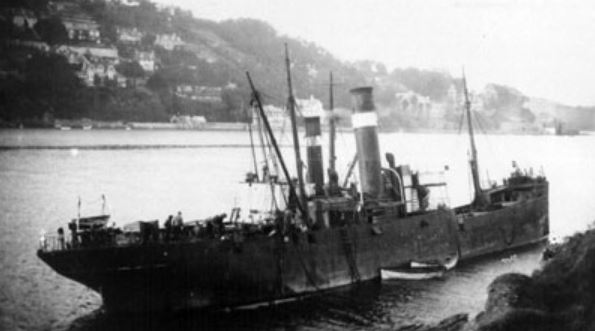
By the 12th of October the temporary repairs at Salcombe were complete, Betsy Anna was ready and prepared for the Cowes journey. Towing her to Cowes would mean a journey of around 115 miles, taking her past Portland, sadly Betsy Anna did not make Cowes, barely half way and taking on water her towing lines would break off Portland Bill, she would drift the few more miles to The Needles, East of Swanage, where she sank and lies broken apart to this day
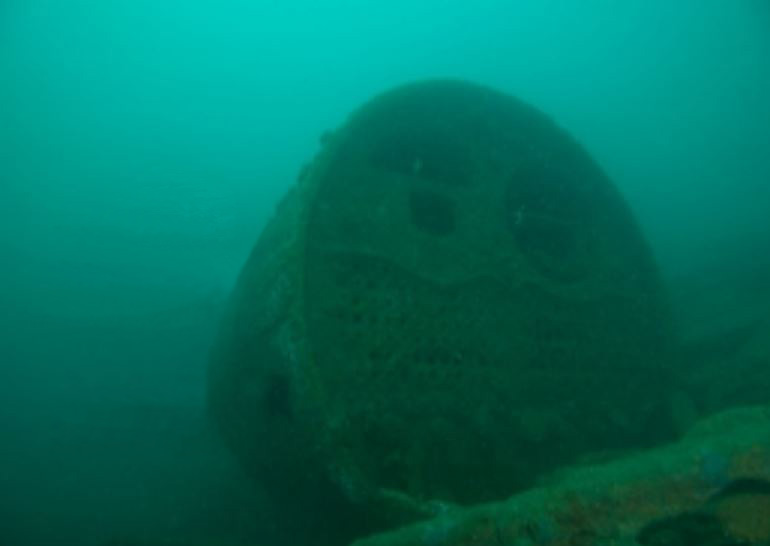
I dived the Betsy Anna in September of 2007 on the Inspiration with Mike Baker, visibility was not great, which is something you put up with fairly often in UK diving, but it does mean you get quite zoned in on smaller areas of the wreck, anyhow the Green Navy Log records: “BETSY ANN SWANAGE DORSET Very Dingy dive – glad of the torch – great hunt round over a very broken old steamer hawse & chain still in place and so was the prop – shaft tunnel very broken up but a full boiler had 2 conger in one small & one which was very large – small lobster under the prop tunnel buddy Mike Baker Viz 2m” I clearly enjoyed the dive even though there was a great deal of debris and you had to make out what you were looking at because of the low viz and lack of wider context, she’s a wreck I’d like to see again in better light, sadly to date that’s the only dive I have done on Betsy Anna……..but you never know!
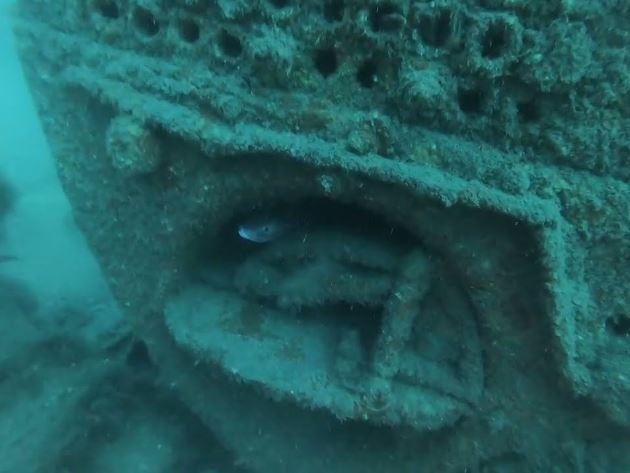
The loss of the Betsy Anna gets scant mention, although there is an entry in the Dutch Shipping Journal of October 1926:
Het Schip (The Ship) P300 Shipping & Shipbuilding 01 October 1926
“Ship losses. The sea freight steamship Betsy Anna, size 880 bru to reg. to show 1300 ton deadweight, in 1890 by W . Dobson & Co. in New castle built on Tyne belonging to Berghuys’ Kolenhandel te Amsterdam, recently stranded at Prawl point, must be regarded as totally lost“
As always this piece is greatly enhanced by those who illustrate it so beautifully, I am immeasurably grateful for the photos and illustrations of Dorset Diving, underwateradventures.co.uk, michaelmafadyenscuba.info, tynebuiltships.co.uk, marhistdata.nl, Billy Embleton, Ashington Colliery Railway, disusedstations.org.uk, northtynesiderailway.blogspot.com and Lloyds Register Foundation and the Tyne & Wear Archives
